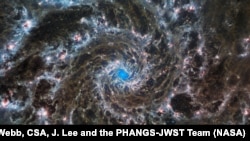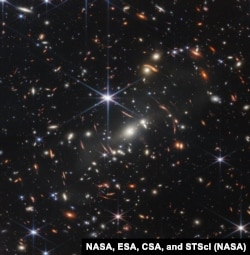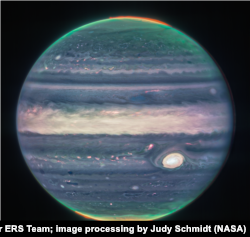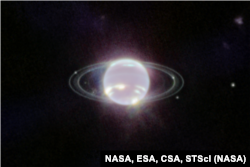It’s been six months since the James Webb Space Telescope began transmitting breathtaking pictures of the cosmos back to Earth, transfixing star gazers and scientists alike.
The images have led to new discoveries about the universe, including the formation of stars, the evolution of black holes and the composition of planets in other solar systems.
NASA’s Webb telescope — a collaboration between the United States, Europe and Canada — was launched on Christmas Day 2021. However, it was not until July 12, 2022, when U.S. President Joe Biden officially released the first set of pictures taken by the $10 billion telescope, that its first images were seen by the world.
Here is a look at some of the best images captured by the telescope over the past six months.
Galaxy cluster (Webb’s first Deep Field)
July 12, 2022
Among the first set of images taken by the telescope and revealed by NASA is a galaxy cluster known as SMACS 0723 that is teeming with thousands of galaxies. NASA called the picture “the deepest, sharpest infrared view of the universe to date” and said it shows the galaxies as they appeared 4.6 billion years ago. Scientists describe the telescope as looking back in time. That is because it can see galaxies that are so far away that it takes light from those galaxies billions of years to reach the telescope.
The Carina Nebula
July 12, 2022
Also part of the first set of images NASA released, this picture shows emerging stellar nurseries in a star-forming region called NGC 3324 in the Carina Nebula. NASA says the stellar nurseries and individual stars that are seen in the image are completely hidden in visible-light pictures. “Because of Webb’s sensitivity to infrared light, it can peer through cosmic dust to see these objects,” it said. A successor to the Hubble Space Telescope, Webb is able to use the infrared spectrum in capturing its images, while its predecessor used mainly optical and ultraviolet wavelengths.
Atmosphere of a distant planet
July 12, 2022
This observation from the Webb telescope captures detailed measurements of a planetary atmosphere 1,150 light-years away. Among the findings from this atmosphere is the distinct signature of water. NASA says such images show “the significant role the telescope will play in the search for potentially habitable planets in coming years.” The planet analyzed here, known as WASP-96 b, is one of more than 5,000 confirmed exoplanets in the Milky Way, according to NASA. It has a mass less than half that of Jupiter, a temperature greater than 500°C, and it orbits its Sun-like star once every 3½ Earth-days.
Enchanting Jupiter
August 22, 2022
The Webb telescope captured new images of Jupiter in August, delighting the internet with its composite picture of the planet from three infrared filters. Jupiter’s Great Red Spot – a storm so big it could contain the entire Earth — is shown in white instead of red, and in sharp detail. NASA says the spot appears white, as do some of the clouds around the planet, because they are reflecting a large amount of light and contain high-altitude hazes.
Neptune’s rings
September 21, 2022
Staying within our solar system, Webb turned its gaze to Neptune, producing an image of the icy planet that captures some of the clearest views of its rings. The photo also shows seven of Neptune’s 14 known moons. While Neptune appears blue at visible wavelengths, caused by small amounts of gaseous methane, Webb’s near-infrared camera does not show the color in this image. “Methane gas so strongly absorbs red and infrared light that the planet is quite dark at these near-infrared wavelengths, except where high-altitude clouds are present,” NASA said.
The Pillars of Creation
October 19, 2022
Webb’s new view of the Pillars of Creation shows a beautifully clear picture of the celestial event, where new stars are forming within dense clouds of gas and dust. The Pillars captured people’s imagination when NASA's Hubble Space Telescope began sending images of it in 1995, including the picture at left taken in 2014. The image on the right is created from Webb’s near-infrared camera and shows the presence of far more stars, which are formed out of the dusty clouds over millions of years.














